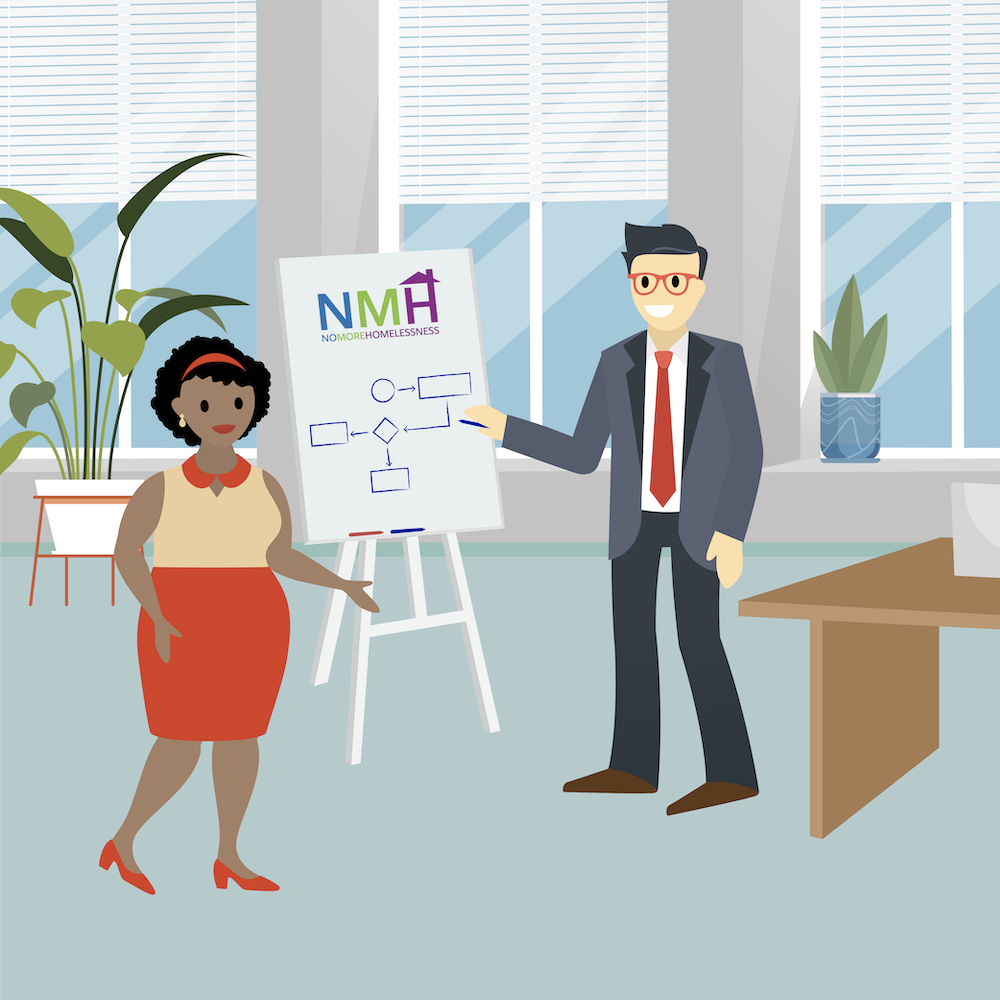Interview Key Stakeholders
Learning Objectives
After completing this unit, you’ll be able to:
- Explain why having a vision is critical to implementation success.
- Define a best practice approach for conducting stakeholder interviews.
Understand the Why
If your nonprofit met all of its goals, what would the world look like? Most nonprofits can tell you clearly why they do the work they do. Having a vision of the change they want to see in the world defines their purpose, helps attract support from donors and volunteers, and prevents mission creep.
This might surprise you, but taking full advantage of a powerful technology platform like Salesforce also requires that same kind of vision. What would your day-to-day look like if you had the systems you needed to work most effectively? Having a clear understanding of why you are going to implement Salesforce for Nonprofits will help you solidify support from your board, leadership, and staff, as well as drive adoption and keep your implementation on track.

To be honest, we’ve heard of a few nonprofits that gravitated to using Salesforce solely because of Salesforce’s license donation and discount program. We get it. Ten Salesforce licenses at “no cost” sounds like a pretty good deal. But if “it’s free” is the reason you’re choosing Salesforce, you might be in for a bumpy ride. The reality is that using a potentially transformative platform like Salesforce takes a commitment of time, money, and continuous learning in order to use it well.
And that commitment is sustained by your passion for the “why”–the vision of what adopting Salesforce will allow you to accomplish. So let's get started. The first step in crafting your Salesforce vision is to interview your key organizational stakeholders.
Interview Key Stakeholders
One of the most important groups of stakeholders to involve in crafting your Salesforce vision is your executive team. We’ve studied thousands of nonprofits who are seeing high impact returns on their investment in Salesforce, and all point to strong executive support as a key to their success. You’ll want to involve key executives early and ensure that high-level organizational goals sit at the heart of your Salesforce vision. This vision isn’t just about technology. This visioning process is about how your organization can better meet its mission, and then align that vision with the right technology to do the job.
After enrolling executives in the visioning process, the next step is to dig into daily processes with key staff and volunteer stakeholders. Include their specific program goals, current pain points, and why they believe the organization is or isn't meeting its goals. In technology implementations, these interviews are a part of what is called a “discovery” process.
Here are some sample interview questions to get you started:
Big Ideas
- What is the ideal experience we want our stakeholders to have?
- How does that ideal experience compare to the experience they're having today?
- If you could snap your fingers and change one thing at our organization, what would it be? What impact would that have?
Goals & Metrics
- What are the key goals you and your team are driving toward?
- How do you define success?
- How is your progress toward those goals tracked and measured?
Strengths & Challenges
- What are the key strengths/assets of your team when it comes to accomplishing your goals?
- What are the top three challenges we’re facing today, and how do they impact our organization and our stakeholders?
- How do people work around these challenges?
- Is anything missing from our strategy or your team's strategy?
- What are the potential consequences of not changing?
In addition to your questions, encourage your interviewees to whiteboard their processes, ideas, and ideal scenarios whenever possible. And, if your interviewee agrees, record interviews so that you can listen back to key parts of the conversation. Sometimes, it can be challenging to listen attentively to the interviewee, make decisions about which questions to ask next, and take useful notes all at once.

Identify Themes
After each interview, it can be helpful to summarize your findings into three buckets:
- Pain points
- Opportunities and ideas
- Other key takeaways
As you complete a few interviews, you should start to see some themes emerging across answers in those three buckets. These high-level themes will help you articulate clearly what core problems you need help from your new technology to solve.
Resources
